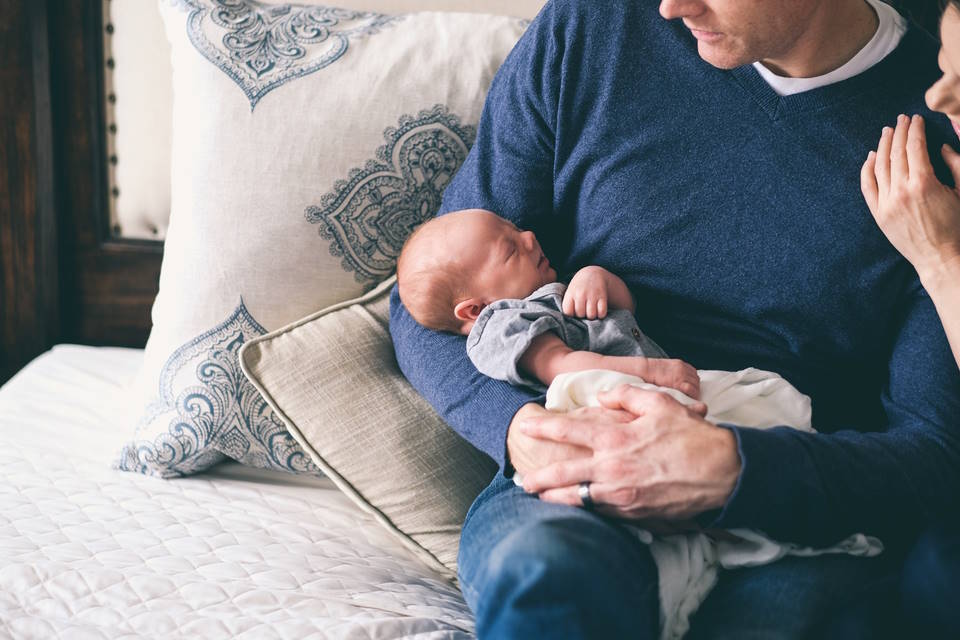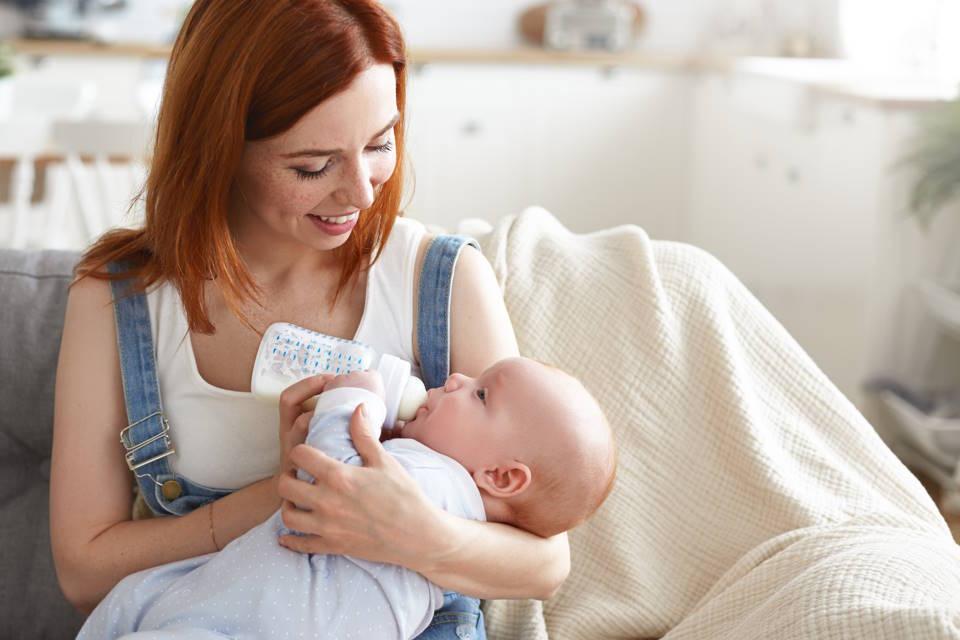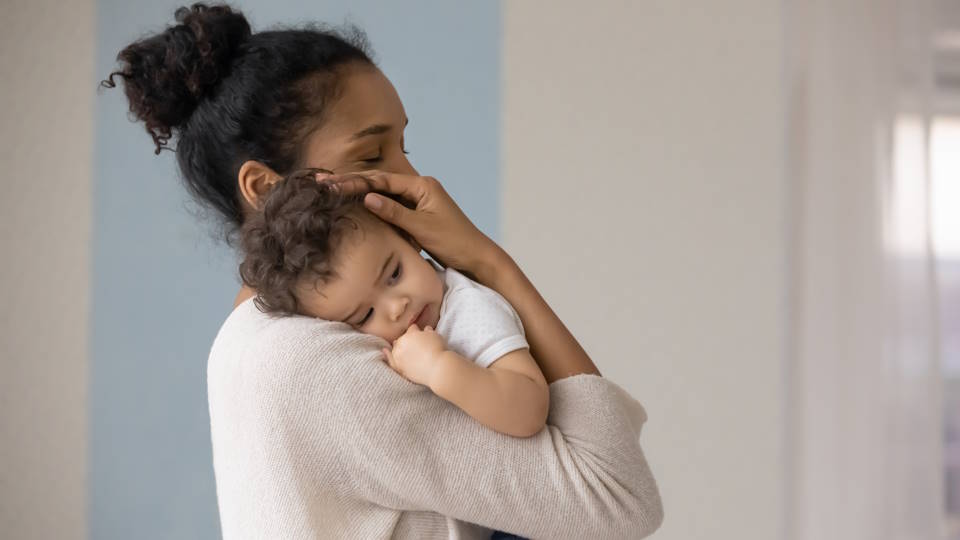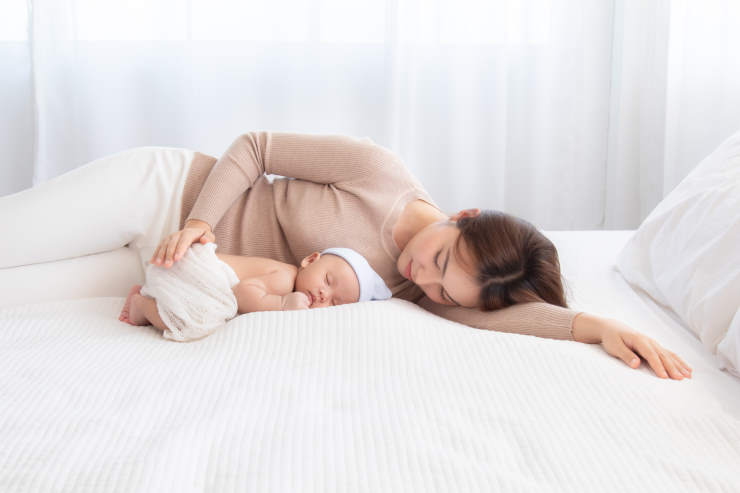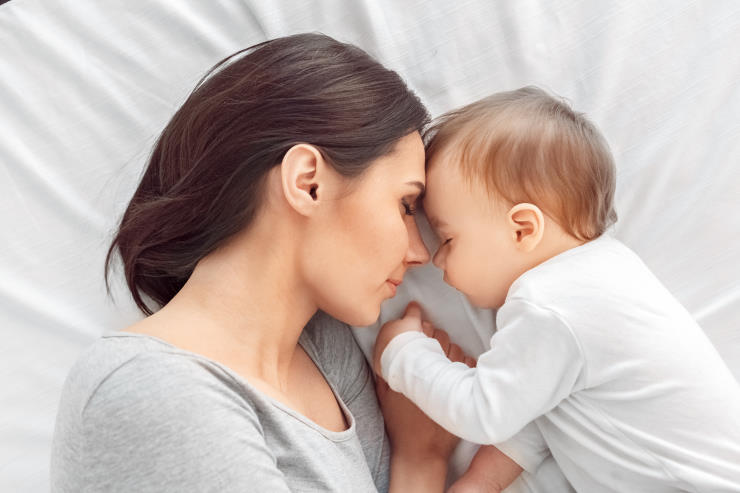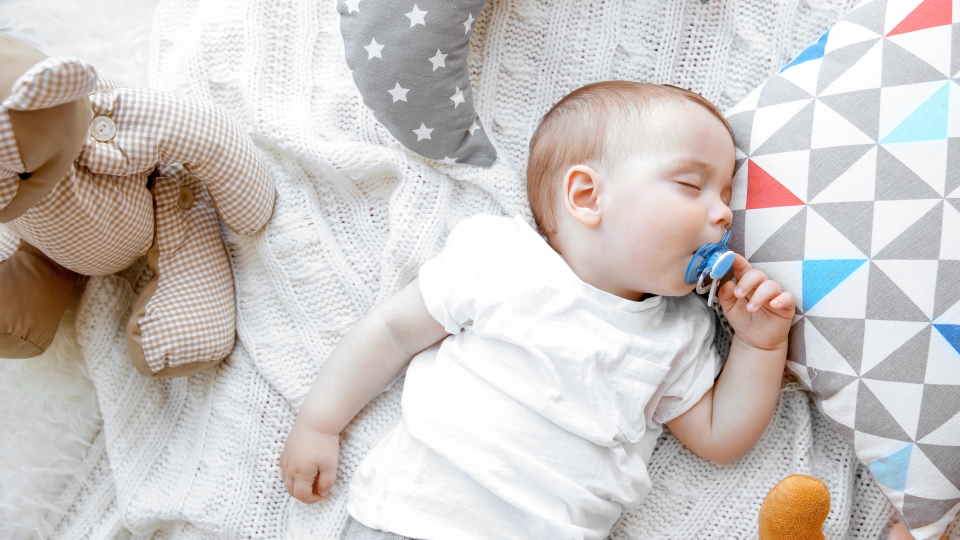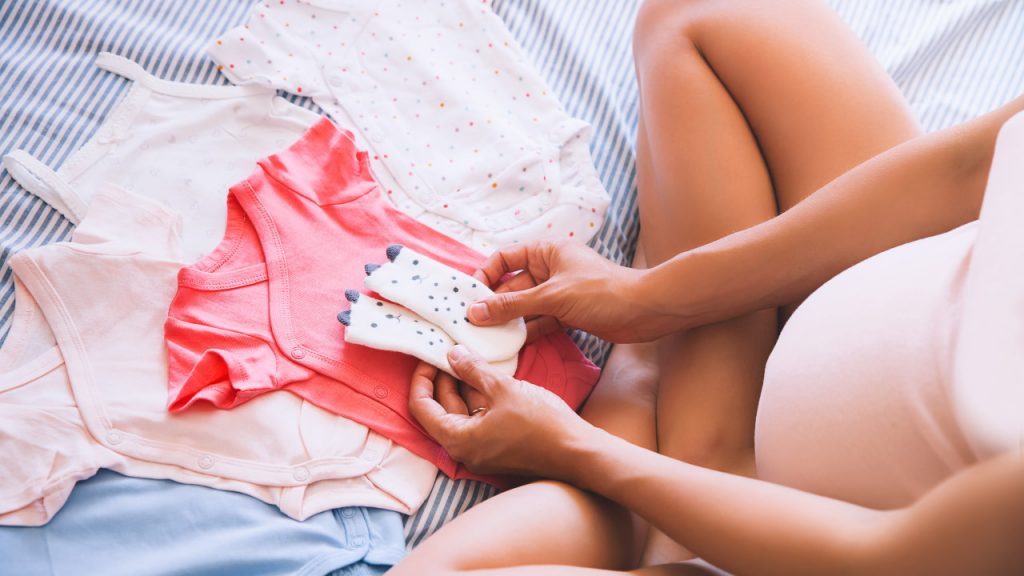As a new parent, one of the most challenging things you might encounter is getting your baby to sleep without being held. While holding your baby has a calming effect on them, it can also be exhausting, especially when you have other things to attend to. It’s essential to understand that babies grow and develop at different rates, and there’s no specific age when they’ll sleep without being held. However, there are various strategies and techniques you can use to encourage your baby to sleep without being held.
If your baby wakes up every time you put them down, it could be due to a range of reasons. Babies are most comfortable sleeping in a parent’s arms because it makes them feel secure and loved. Additionally, they may require more comfort in their early weeks or months of life and may take some time to get used to sleeping outside of your arms. We’ll discuss several tips and tricks to help your baby sleep without being held, from teaching them to self-soothe to handling crying episodes.
It’s essential to remain patient as you experiment with these different methods and techniques, as some may take a while to work. However, with persistence, you can help your baby establish healthy sleep habits that promote better nighttime rest for you both. Keep reading to find out how to get your baby to sleep without being held, regardless of their age or situation.
Introduction
As parents, nothing compares to the feeling of holding our baby in our arms, watching them drift off to sleep. But as much as we love those quiet moments, it can be exhausting when your baby only falls asleep while being held. Not only does this restrict your time and mobility, but it also puts your baby at risk of dependence on being held to sleep. Don’t worry though, there are plenty of ways to help your baby learn to sleep on their own.
The first thing to consider is the sleeping environment. Make sure your baby’s room is dark, quiet, and a comfortable temperature. This can help signal to your baby that it’s time for sleep. Next, try putting your baby down drowsy but awake. This helps them learn to associate their crib or bassinet with sleep. You can also try using a consistent bedtime routine to help your baby unwind and relax before sleep.
- Establish a consistent bedtime routine
- Put your baby down drowsy but awake
- Use white noise or soft music to help soothe your baby to sleep.
Another helpful technique is to slowly wean your baby off being held to sleep. Try gradually decreasing the amount of time you hold your baby before they fall asleep, until they learn to fall asleep on their own. It’s important to remain patient and consistent with this process, as it may take time for your baby to learn this new skill. Remember, sleep is a learned skill, and each baby learns at their own pace.
| Do’s | Dont’s |
|---|---|
|
|
Lastly, remember to trust your instincts. No one knows your baby better than you do. If your baby is crying and needs to be held or rocked to sleep, do what works best for you both. And don’t be afraid to seek help from a pediatrician or sleep consultant if you’re struggling with your baby’s sleep patterns.
At What Age Do Babies Sleep Without Being Held?
As a new parent, sleep can often feel like the holy grail. You read all the books and ask for advice from friends and family about getting your little one to sleep on their own. One of the most common questions new parents have is at what age do babies start sleeping without being held?
Well, the answer is not a straightforward one as every baby is different. However, on average most babies start to self-soothe and sleep on their own around 3-6 months of age. So, if you are struggling with getting your baby to sleep without being held just be patient and keep following your baby’s cues.
- If you feel like your baby is ready for some more independence then you can slowly start transitioning them to sleep alone.
- You can start by putting them down in their crib while they are drowsy, so they can start learning to self soothe rather than being rocked to sleep
- It is also helpful to have a bedtime routine so they know what to expect and can start to associate certain actions with sleep.
It is important to keep in mind that even after they start sleeping on their own, babies often go through sleep regressions or have nights where they need more comfort. Remember to always follow your baby’s cues and do what feels right for you and your family.
Why Does My Baby Wake up Every Time I Put Her Down?
Putting your baby down to sleep can be a challenge, especially if she wakes up every time you do so. This can be frustrating for parents who need a break or just want to complete a task without holding their little one. So, what causes this phenomenon and what can you do about it?
One reason your baby may wake up when you put her down is due to the moro reflex. This is an involuntary reflex that causes your baby to suddenly wake up and flail her arms and legs. This is a normal reflex that is strongest in the first few months of life and can be triggered by the sensation of falling. To prevent this from happening, make sure to keep your baby in a slightly upright position when putting her down to sleep.
- Another reason your baby may wake up is due to a sleep association. If your baby is used to falling asleep while being held or rocked, she may have difficulty transitioning to a different sleep environment. To break this association, try putting your baby down drowsy but awake. This will help her learn to fall asleep on her own without needing to be held or rocked.
- Your baby may also wake up due to hunger or discomfort. Make sure your baby has a full belly before putting her down to sleep and check that she is not too hot or cold. A comfortable sleep environment can go a long way in helping your baby stay asleep.
- If none of the above solutions work, your baby may simply need more time to adjust to sleeping on her own. Be patient and consistent with your approach to sleep training. It may take a few weeks or even months for your baby to learn to sleep through the night without waking up when you put her down.
What Should I Do if My Baby Only Sleeps When Held?
It’s common for parents to struggle with getting their baby to sleep without being held. While it’s definitely important to provide comfort and security for your little one, it’s not always practical or sustainable to hold them constantly. So, what can you do if your baby only sleeps when held?
1. Start with the basics. Make sure your baby’s basic needs are met before attempting to put them down for sleep. This includes ensuring that they are well-fed, have a clean diaper, and are at a comfortable temperature. Additionally, establish a consistent bedtime routine that signals to your baby that it’s time to wind down and prepare for sleep.
- feed your baby before putting them down to sleep
- change their diaper to avoid them from becoming uncomfortable
- ensure room temperature is not too hot or cold
2. Gradually reduce the amount of time you hold them. While it’s understandable to want to hold your baby as much as possible, it’s important to gradually transition them to sleeping on their own. Start by holding them until they are drowsy, but not fully asleep, and then lay them down in their crib. Over time, you can gradually reduce the amount of time you hold them before laying them down, until they are able to fall asleep on their own.
3. Implement self-soothing techniques. Encourage your baby to learn how to self-soothe by providing them with a comfort item like a soft blanket or stuffed animal. You can also try techniques like swaddling or using a white noise machine to help your baby feel secure and calm in their crib.
| Comfort Items | Self-Soothing Techniques |
|---|---|
| Soft Blanket | Swaddling |
| Stuffed Animal | White Noise Machine |
Remember, every baby is different and what works for one may not work for another. Don’t be afraid to experiment and try different techniques until you find what works best for you and your little one. With patience and persistence, you’ll be able to help your baby sleep soundly without being held.
Should I Pick up Baby Every Time He Cries?
One of the biggest questions new parents have about their babies is whether or not they should pick them up every time they cry. It’s a tough question to answer because every baby is different and has unique needs, but there are a few things you can consider when deciding whether or not to pick up your crying baby.
Firstly, it’s important to understand that crying is the only way that babies can communicate with us. By crying, babies tell us that they need something – whether it’s food, a diaper change, or comfort. So, if your baby is crying, it’s important to figure out what they need and whether or not you can provide it.
- If your baby is hungry, you should definitely feed them.
- If your baby needs a diaper change, you should change it.
- If your baby is sick or in pain, you should comfort them and seek medical attention if necessary.
Secondly, babies rely on their parents to help them regulate their emotions and feel secure in the world. By picking up your crying baby, you provide them with the comfort and security they need to feel safe and happy. You also teach them that you are there for them when they need you.
However, it’s also important to teach your baby how to self-soothe and learn to fall asleep on their own. So, while it’s okay to pick up your baby when they are crying, it’s also important to gradually introduce them to ways to soothe themselves. This can include pacifiers, swaddling, or white noise machines.
| Things to consider: | What to do: |
|---|---|
| Your baby’s age and developmental stage | Adjust your responses to your baby’s needs |
| Your own comfort level and parenting philosophy | Do what feels right for you and your baby |
| Whether or not your baby is hungry, in pain, or needs a diaper change | Attend to your baby’s needs first |
How Long Will a Baby Cry Before Falling Asleep?
If you’re a new parent, you’ve probably experienced the frustration of trying to put your baby to sleep. Sometimes it can be an easy process, but other times it can be a real challenge. One of the most common questions new parents have is, “How long will a baby cry before falling asleep?” We’ll explore this topic in more detail and offer some tips and tricks for getting your baby to sleep peacefully through the night.
The answer to this question really depends on the baby. Some babies may only cry for a few minutes before falling asleep, while others may cry for hours. It’s important to remember that every child is different and there is no “one-size-fits-all” approach to getting your baby to sleep. However, there are some general guidelines that can be helpful.
- First, it’s important to establish a consistent bedtime routine. This will help your baby learn when it’s time to go to sleep and what to expect before bed.
- Second, try to create a calm and relaxing environment. This might mean dimming the lights, playing some soft music, or using a white noise machine.
- Third, make sure your baby is comfortable and dry. Check their diaper and make sure they’re not too hot or cold.
Even with these tips, your baby may still cry before falling asleep. In fact, it’s normal for babies to cry before going to sleep because it’s their way of releasing tension and energy from the day. But if your baby is crying excessively and nothing seems to be calming them down, it may be a sign that something else is wrong. In these cases, it’s important to consult with your pediatrician to rule out any underlying medical issues.
| Age | Hours of Sleep (per day) | Naps (per day) |
|---|---|---|
| 0-2 months | 14-17 | 4-6 |
| 2-4 months | 12-15 | 3-4 |
| 4-6 months | 12-15 | 2-3 |
| 6-9 months | 12-14 | 2-3 |
| 9-12 months | 12-14 | 2 |
How Do I Teach My Baby to Self Soothe?
Teaching your baby to self soothe can be a daunting task, but it is an important milestone for both the baby and the parents. Self soothing skills will help your baby to sleep better and more independently, which in turn will also ease your own anxiety related to sleepless nights. It is important to introduce the process of self-soothing in a gentle manner and with a lot of patience. It might take some time for your baby to get accustomed to the new routine, but the results are well worth the effort.
- Establish a soothing nighttime routine
- Put your baby down while still awake
- Let your baby cry for a short period of time
Establishing a soothing nighttime routine is the first step in teaching your baby to self soothe. Consistency is key, so make sure to follow the same routine each night. A bath, massage, and lullaby can be a part of the routine to help your baby relax and feel secure. It is important to put your baby down while still awake and not wait until they fall asleep in your arms. This will teach them the process of falling asleep on their own.
It is normal for babies to cry when they are put down and left alone. Letting your baby cry for a short period of time (usually a few minutes) before going in to comfort them is a good way to gradually introduce the process of self-soothing. Try to avoid picking them up immediately, and instead offer comforting words or gentle touch to reassure them that you are still there. Repeat this process in increasing intervals, giving your baby more time to self-soothe before going in to comfort them.
| DO | DON’T |
|---|---|
| Be consistent with the nighttime routine | Expect immediate results |
| Remain calm and offer reassurance from a distance | Force your baby to cry for long periods of time |
| Try alternative soothing methods such as a pacifier or soft toy | Give up too soon |
Remember, every baby is different and there is no one-size-fits-all approach when it comes to teaching your baby to self soothe. Some babies may take longer than others to develop the skills, and it is important to remain patient and consistent in the process. Alternatively, if your baby is still struggling to self soothe after several attempts, it might be worth talking to your healthcare provider to rule out any underlying medical issues.


